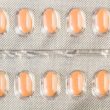Coronary artery disease is common among patients considered for transcatheter aortic valve implantation (TAVI). With the expansion of the indication for TAVI to a population with lower surgical risk, and therefore younger, there has been a gradual increase in the incidence of coronary events. However, there is limited data on treatment strategy and outcomes in...
12-Month Evolution of Edge-to-Edge Repair with PASCAL
Mitral regurgitation (MR) is the most frequent valve disease. Mitral transcatheter edge-to-edge repair (M-TEER) has been shown beneficial in high or prohibitive risk patients in cases of degenerative and functional MR. The PASCAL device has been shown safe and effective by the CLASP II, but we still need further research in clinical “real world” environments. ...
ACC 2024 | ULTIMATE-DAPT Trial
The international guidelines recommend the use of dual antiplatelet therapy (DAPT) with aspirin plus a P2Y12 inhibitor during 12 months in patients receiving percutaneous coronary intervention (PCI) for acute coronary syndrome (ACS), to prevent events such as MI and stent thrombosis. This was a multicenter, placebo controlled, double blind study to determine whether ticagrelor alone,...
Clopidogrel Monotherapy Beyond 12 months: Long Term Analysis of the STOPDAPT-2
Short dual antiplatelet therapy (DAPT) has shown benefits in patients receiving drug eluting stents (DES), reducing bleeding with no concomitant increase in major adverse cardiovascular events (MACE). Traditionally, the therapeutic window was limited to monotherapy with P2Y12 inhibitors during the first year and there are few data on short DAPT followed by long term monotherapy...
Use of Apixaban and Post TAVR Valve Thrombosis
TAVR can be associated to early valve thrombosis, characterized by thrombi formation near or attached to the prosthetic valve, with or without valve dysfunction. This dysfunction is associated with increased leaf thickening and reduced leaflet motion, as well as reduced orifice area or increased transvalvular gradient. Triggered multislice CT allows dynamic valve assessment and thrombosis...
Predictors of Stroke at 30 Days and 6 Months After TAVR
While the rate of stroke has decreased since the early days of transcatheter aortic valve replacement (TAVR), it remains non-negligible, reaching up to 1%-3% at 30 days. As TAVR progressively expands to low-risk populations and younger patients, identifying risk factors for patient selection and management in stroke prevention becomes crucial. While researchers have identified predictors...
Drug-Coated Balloons (DCB): Sirolimus vs. Paclitaxel in De Novo Lesions in Small Vessels
The use of drug-coated balloons (DCB) offers the advantage of avoiding permanent stent implants, thus reducing the incidence of in-stent restenosis (ISR), neoatherosclerosis, and late in-stent thrombosis. Additionally, the use of DCB reduces the duration of dual antiplatelet therapy. Current evidence supports the use of DCB for ISR treatment (Class I) compared with drug-eluting stents...
Cilostazol in Diabetic Patients with Endovascular Peripheral Revascularization: One Step Beyond Symptom Improvement
In patients with peripheral vascular disease (PVD), the presence of diabetes has been significantly associated with increased failure of critical lower limb ischemia (CLI) treatment, and higher incidence of amputation. This relationship has been attributed mainly to comorbidities and patient characteristics, concomitant peripheral neuropathy and marked microvascular alteration. Also, a high proportion of these patients...
Optimal Duration of DAPT with Oral Anticoagulation After PCI?: 1 Month vs. 3 Months
While the benefits of dual antiplatelet therapy (DAPT) with aspirin and a P2Y12 inhibitor are recognized, its primary complication is the occurrence of bleeding events, which negatively impact patient morbidity and mortality. Additionally, about 10% of patients undergoing percutaneous coronary intervention (PCI) are on oral anticoagulant therapy, which significantly increases the risk of bleeding when...
TCT 2023 | COMPARE 60/80 HBR TRIAL
This was a randomized study including patients at high risk of bleeding treated with short dual antiplatelet therapy (DAPT). A total 747 patients were recruited, 368 received PCI with the ultrathin Superflex stent with 60 µm struts (SUF), and 364 received the Terumo Tansei with 89 µm struts (SF). Primary end point was NACE at...









